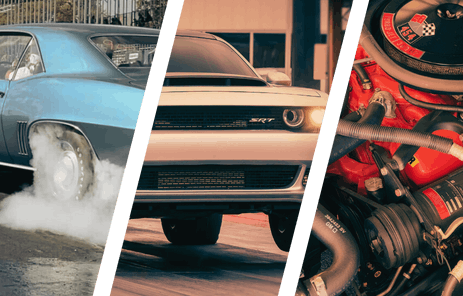
The search for clean air isn’t always located at the tailpipe. We recently stumbled upon this thread at ChevyTalk.org where a member (krchevy) has a nicely-apportioned 1960 235ci straight-six transplanted into his ’51 Chevy. It had been blessed with headers and he recently installed a dual-carb Fenton intake to pump up the cool factor. The debate began with whether to swap out the Carters that he is currently running for a set of Rochester carbs.
As they say, that’s when the fight started. Well, not exactly. The group over at ChevyTalk.org are pretty helpful and easy-going and the consensus was that if the carbs are working, why change them. But the thread then takes a diversion, as topics often do, to what kind of filtration to plop on top of those two hard-working fuel-meters.
You can’t start a conversation about filtration on cars that were built before Lyndon B. Johnson was in office without liquid-filled filters permeating the lion’s share of the debate. The old oil-bath filter topic often brings out both proponents and prosecutors of these once prevalent sources for clean air. Many will swear that they were superior to any sort of scrubbing that today’s dry element filters could hope to achieve. Others, usually with oil on their shirts, will remember how dirty they could be if you tipped them or they slipped out of your hands and spilled oil all over the place. Remember, that oil needs occasional changing just like a dry, paper filter. But how can we know which is best for our cars?

We recently found an old paper from S. T. Mccormick, a member of the Society of Automotive Engineers (SAE) that was written in January of 1959 titled “”Air Cleaners – Dry or Oil Bath”. It can be purchased on the SAE website. Thinking that we’ve stumbled upon the holy grail, we read through the five-page report only to find an unexciting finale. The paper concluded that it depended on your application and needs. So much for finding the smoking gun.
Basically, we were forced to agree with Bel Air Kiwi on ChevyTalk.org when he described them as, “Oil bath filters are from the era of splash lubrication and should be considered as technology from that era.”
If you look at an oil bath air filter from underneath, you’ll note that there’s a pretty small opening on a fairly large filter body. The reason for this is because there needs to be a certain surface area of the oil inside the filter or else the vacuum from the engine will suck the oil up into the engine. Not helpful for plug life and REALLY bad if it were installed on a diesel engine! As engines got bigger lungs, the amount of air that they consumed increased. You’ll note that many of the later oil bath filters became more elongated or larger to help keep the oil in the filter area.

The concept isn’t without merit though. Several of today’s filter manufacturers have realized the benefit of oil’s capability to capture minute particles and K&N has marched out into the forefront of performance filters using this age-old technology. The amount of oil is now limited, with just enough to do the job and K&N actually advises against “over-oiling” the filter, as it does not help filtration and may affect today’s sensors. Use only as much as necessary.
So, what say you? Are you the type that prefers to keep an extra quart of lube on the top of your engine or do you prefer to show your bright whites? As this discussion shows, when it comes to keeping the air our engines breathe clean, we’re a pretty passionate bunch. So take a minute and share with us and our readers what you prefer and why. The debate has been going since somewhere around 1959 or earlier, so surely you’ve got an opinion on the matter!
You might also like
Hurricane-Powered Ram Pickup First In The 8s!
Evans' elapsed time was an insane 8.89.3 at 149.10 mph with a 1.602 60-ft. time. You can almost hear the HEMI guys crying






